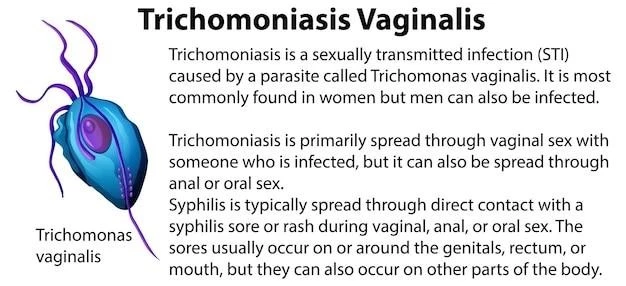Overview of Acromesomelic Dysplasia Campailla Martinelli Type
Definition and Background
Acromesomelic Dysplasia Campailla Martinelli Type is a rare genetic disorder characterized by skeletal abnormalities leading to disproportionate short stature. It is caused by mutations in the NPR2 gene٫ affecting bone growth regulation. The condition was first described by Campailla and Martinelli in 1972.
Epidemiology
Acromesomelic Dysplasia Campailla Martinelli Type is an extremely rare condition with a prevalence of less than 1 in 1,000,000 individuals worldwide. The disorder may affect individuals of any ethnic background and is not associated with a specific gender predilection. Due to its rarity, precise epidemiological data are limited.
Genetic Basis
Acromesomelic Dysplasia Campailla Martinelli Type is primarily caused by mutations in the NPR2 gene, which plays a crucial role in regulating bone growth. These genetic alterations disrupt the normal signaling pathways involved in skeletal development, leading to the characteristic features of the disorder. Understanding the genetic basis is essential for accurate diagnosis and potential targeted therapies.
Genetic Causes of Acromesomelic Dysplasia Campailla Martinelli Type
Identification of Genetic Mutations
The identification of genetic mutations in Acromesomelic Dysplasia Campailla Martinelli Type typically involves targeted sequencing of the NPR2 gene. Next-generation sequencing technologies have enhanced the accuracy and efficiency of mutation detection, aiding in precise molecular diagnosis for affected individuals and their families.
Inheritance Patterns
Acromesomelic Dysplasia Campailla Martinelli Type follows an autosomal recessive pattern of inheritance, meaning that affected individuals inherit two mutated copies of the NPR2 gene – one from each parent. Carriers of a single mutated gene typically do not show symptoms but can pass the genetic variant to their offspring; Genetic counseling is vital for understanding the risk of recurrence in families.
Genetic Counseling Considerations
Genetic counseling for Acromesomelic Dysplasia Campailla Martinelli Type involves discussing the mode of inheritance, recurrence risk, and available testing options with affected individuals and their families. It aims to provide comprehensive information, support decision-making, and address emotional and ethical considerations related to genetic testing and family planning.
Symptoms and Clinical Features of Acromesomelic Dysplasia Campailla Martinelli Type
Skeletal Abnormalities
Individuals with Acromesomelic Dysplasia Campailla Martinelli Type often present with distinct skeletal abnormalities such as shortening of the limbs, particularly the forearms and lower legs. Additional features may include abnormal curvature of the spine (kyphosis), joint stiffness, and shortened fingers and toes. These skeletal manifestations contribute to the characteristic stature and physical appearance associated with the condition.
Growth Retardation
One of the hallmark features of Acromesomelic Dysplasia Campailla Martinelli Type is severe growth retardation, resulting in significantly shorter stature than average. The impaired bone growth primarily affects the limbs, leading to disproportionate body proportions. Early recognition of growth issues is critical for timely intervention and management to optimize quality of life for affected individuals.
Facial Features
Facial features in individuals with Acromesomelic Dysplasia Campailla Martinelli Type may show subtle differences, including a flattened nasal bridge, a short nose, and a prominent forehead. While these facial characteristics are not as pronounced as the skeletal abnormalities, they can contribute to the clinical presentation of the condition. Recognizing these features can aid in the diagnostic process and comprehensive management of affected individuals.
Diagnosis and Testing for Acromesomelic Dysplasia Campailla Martinelli Type
Physical Examination
During a physical examination for Acromesomelic Dysplasia Campailla Martinelli Type, healthcare providers assess for characteristic skeletal abnormalities, growth retardation, and facial features indicative of the condition. The evaluation may also include measurements of limb lengths, joint range of motion, and other physical attributes to aid in diagnosis and treatment planning.
Imaging Studies
Imaging studies, such as X-rays and bone scans, play a crucial role in the diagnosis of Acromesomelic Dysplasia Campailla Martinelli Type. These tests provide detailed images of the skeletal system, highlighting the specific bone abnormalities characteristic of the disorder. Radiographic findings aid in confirming the clinical suspicion and guiding appropriate management strategies for affected individuals.
Genetic Testing
Genetic testing is a key component in diagnosing Acromesomelic Dysplasia Campailla Martinelli Type, involving sequencing of the NPR2 gene to identify disease-causing mutations. This molecular analysis helps confirm the clinical suspicion, establish a definitive diagnosis, and facilitate genetic counseling for affected individuals and their families. Understanding the specific genetic alterations is essential for personalized treatment and management strategies.
Treatment Strategies for Acromesomelic Dysplasia Campailla Martinelli Type
Multidisciplinary Approach
The multidisciplinary approach to treating Acromesomelic Dysplasia Campailla Martinelli Type involves collaboration among orthopedic specialists, geneticists, physical therapists, and other healthcare professionals. This coordinated effort aims to address the complex nature of the condition, manage symptoms effectively, and optimize the overall well-being and functioning of affected individuals through tailored treatment plans.
Orthopedic Interventions
Orthopedic interventions for Acromesomelic Dysplasia Campailla Martinelli Type may include limb lengthening procedures, corrective osteotomies, and joint surgeries to address skeletal deformities and improve functionality. These surgical treatments, combined with ongoing orthopedic care and rehabilitation, aim to enhance mobility, alleviate pain, and optimize limb alignment for individuals with the condition.
Pharmacological Management
Pharmacological management of Acromesomelic Dysplasia Campailla Martinelli Type focuses on symptomatic relief and supportive care. Pain medications, anti-inflammatory drugs, and other pharmacologic interventions may be prescribed to manage discomfort, inflammation, and associated symptoms. However, there are currently no medications that can address the underlying genetic cause of the condition.
Prognosis and Long-Term Outlook for Acromesomelic Dysplasia Campailla Martinelli Type
Complications
Individuals with Acromesomelic Dysplasia Campailla Martinelli Type may experience complications such as joint contractures, early-onset osteoarthritis, and functional limitations. These challenges can impact mobility and quality of life, requiring ongoing monitoring and intervention to prevent or manage long-term complications effectively. A multidisciplinary approach is essential to address the diverse needs of individuals with this rare genetic disorder.
Quality of Life Considerations
When managing Acromesomelic Dysplasia Campailla Martinelli Type, considerations for enhancing quality of life include physical therapy, assistive devices, and psychological support. Addressing the psychosocial aspects, pain management, and promoting independence are crucial for improving the overall well-being and functional outcomes of individuals living with this rare genetic disorder.
Follow-up Care
Regular follow-up care for individuals with Acromesomelic Dysplasia Campailla Martinelli Type is essential to monitor growth, address emerging complications, and adjust treatment plans as needed. Close communication between healthcare providers, genetic specialists, and supportive services can help optimize outcomes and provide ongoing support for the unique needs of affected individuals throughout their lifespan.

